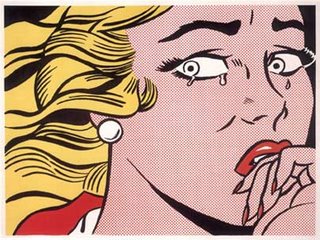There is a global trend against capital punishment. Most nations in the developed world and an increasing number of nations in the developing world have officially abolished the death penalty. Similarly, there is an abolitionist movement in the realm of international law. However, matters are quite different in the United States where the United States Supreme Court in Gregg v. Georgia permitted the resumption of executions by the states after the hiatus brought about by Furman v. Georgia.
If public opinion polls are to be believed, the general concept of capital punishment remains popular in the United States today. Politicians are well aware of this. In the spring of 1995 New York rejoined the ranks of states with the death penalty. A majority of states have laws providing for the death penalty even though the number of actual executions remains relatively low when compared to the population of inmates on death rows across the nation.
In recent years the Supreme Court has repeatedly come out in favor of the death penalty. For instance, the mentally retarded may be executed. Likewise, minors may be executed. Such decisions go against what appears to be the general evolution of international law.
Yet perhaps the most dramatic and disturbing example of the Supreme Court's recent support of the death penalty is Herrera v. Collins where the existence of evidence supporting the petitioner's claim of actual innocence was not proper grounds for federal habeas corpus relief. In other words, in Herrera, the Supreme Court was willing to allow a person who was possiblyice is not just something to study, it is a way of living, a way to be safe and to lead a better life. It is a way of taking responsibility for our actions. And for those of us who will be getting out someday, it will not guilty to be executed despite documented claims of actual innocence and related federal constitutional arguments based on the Eighth Amendment's prohibition against cruel and unusual punishment and the Fifth and Fourteenth Amendments' guarantee of due process of law.
The implications of Herrera are especially tragic when one realizes that a surprisingly large number of Americans have been wrongly convicted of capital crimes. Some of these individuals have also been executed. In the United Kingdom, the execution of a man who later turned out to possibly be not guilty served as an impetus toward doing away with capital punishment for murder in that country. In any event, as is the case with capital punishment in the United States generally, race and class play a role in determining who is more likely to be executed in spite of innocence.
Regardless of how the current Supreme Court may interpret the Constitution, as Mr. Justice William Brennan once pointed out: ?At bottom, the battle [over the death penalty] has been waged on moral grounds.? Taking this statement from Brennan as a cue, it is useful to look at religious perspectives on the death penalty.
It should perhaps come as no surprise that within the United States, Jewish and Christian religious bodies have not spoken with one voice on capital punishment. In the broad Judeo-Christian tradition, biblical passages have been quoted by retentionists and abolitionists alike in support of their respective positions. While it might be one thing for certain Jews to quote the Hebrew Bible in support of capital punishment, it is striking that so many Christians support capital punishment. After all, Jesus (4 BC?-29 AD?) remains the world's most famous executed criminal defendant.
Be that as it may, very little has been written regarding Buddhist views on capital punishment. The author intends to help remedy this deficiency. What follows, therefore, is a Buddhist perspective on the death penalty based upon Buddhist thought and history. This article should be seen as being just that. In other words, what is about to be presented is merely one possible perspective, albeit one that has considerable support in the corpus of Buddhist literature and the experience of Buddhism as a living religion existing in various cultures over the past two and a half millennia.
II. BUDDHIST TEACHINGS
Buddhism is a rich tradition with an extensive body of religious literature. This literature has been referred to by the author in developing a systematic Buddhist perspective on the death penalty. The nature and purpose of the texts vary, but the major themes of the texts point toward a definite stance which is clearly within the spirit of the Buddhist outlook on the human condition.
A. Panca-sila
A logical starting point from which to begin considering a Buddhist perspective on the death penalty would be Buddhism's most basic set of training rules for personal spiritual development known as the panca-sila or five precepts. These basic rules of good conduct are for all Buddhists, lay or ordained.
The very first, and arguably most important, precept is the training rule of abstaining from taking life. The four other training rules are: abstaining from taking what is not given; abstaining from sexual misconduct; abstaining from false speech; and abstaining from intoxicants.
Abstaining from the destruction of life encourages the development of compassion (karuna) for all beings. Moreover, Buddhism teaches that all sentient beings (sattva) are fundamentally good. All sentient beings possess what is known as Buddha-nature (buddhata). Having Buddha-nature means that all sentient beings can eventually realize enlightenment/awakening (bodhi) and thereby become Buddhas i.e., Awakened Ones. Hence, Buddhism is universalistic. Everyone has great spiritual potential waiting to be unleashed no matter how depraved they might look.
All life is to be treasured. It matters not how lowly such life may seem. Treasuring the lives of those who, in many cases, have not valued lives of others is an act of spiritual courage. This notion supports nonviolence/non-harming (ahimsa) which leads to the advocation of such wholesome causes as world peace and vegetarianism. Taking a strong stance against the death penalty is a logical outgrowth of any religion or philosophy based upon nonviolence.
Another aspect of ahimsa is the notion of karma, ?action? or ?deed.? At the risk of oversimplification, there is good as well as bad karma. We are influenced by karma from the past and we create new karma in acts of free will as we live our lives. Killing is simply bad karma.
The author will now turn to additional textual support for a Buddhist position against all forms and cases of capital punishment
B. The Dhammapada
One of the most important religious texts for Buddhism is a poetic collection of aphorisms known as the Dhammapada or Dharmapada. This work is preserved in Pali and in other ancient languages. The title means roughly ?Path of Dhamma? (Sanskrit: Dharma). The term dharma/dhamma can be translated in any number of ways depending upon the context. ?Law,? ?righteousness,? ?merit,? ?quality,? ?cause,? and ?religious teachings? are among some of the approximate meanings of this key concept in Indian thought.
The initial verses of Chapter 10 of the Dhammapada speak of killing: ?Everyone fears punishment; everyone fears death, just as you do. Therefore do not kill or cause to kill. Everyone fears punishment; everyone loves life, as you do. Therefore do not kill or cause to kill.?
In Chapter 26, the final chapter of the Dhammapada, we find a related passage: ?Him I call a brahmin who has put aside weapons and renounced violence toward all creatures. He neither kills nor helps others to kill.?
C. Janasandha-Jataka
This jataka is a story said to be told by the Buddha to the King of Kosala It tells the tale of a certain Prince Janasandha, the son of King Brahmadatta of Banaras:
Now when [Prince Janasandha] came of age, and had returned from Takkasila, where he had been educated in all accomplishments, the king gave a general pardon to all prisoners, and gave him the viceroyalty. Afterwards when his father died, he became king, and then he caused to be built six almonries.... There day by day he used to distribute six hundred pieces of money and stirred up all India with his almsgiving: the prison doors he opened for good and all, the places of execution he destroyed....
Abolition of the death penalty is a regular theme in Buddhism, as we shall see below.
D. Rajaparikatha-ratnamala
The Rajaparikatha-ratnamala or ?The Precious Garland of Advice for the King? is a treatise attributed to the famous South Indian Buddhist philosopher Nagarjuna (2nd or 3rd century AD). In this work on Buddhist statecraft, Nagarjuna gives King Udayi of the Satavahana Dynasty advice on a variety of matters. Here is how Nagarjuna handles capital punishment:
O King, through compassion you should always<> Banishment or exile has been employed as a form of sanction in various pre-modern Asian legal systems. Indeed, banishment has also been employed at times in the West. Although banishment obviously entails psychological and physical hardships, it is certainly to be preferred to death. Moreover, it can protect the convicted defendant from the possible wrath of friends or family of the victim.
E. Avatamsaka-sutra
Another, albeit rather unusual, treatment of capital punishment comes from the lengthy and highly symbolic Avatamsaka-sutra which is also known as the Buddhavatamsaka-sutra. This sutra or scripture tells the saga of a bodhisattva named Sudhana-sresthidaraka, or simply Sudhana. Sudhana is on a pilgrimage to visit various spiritual teachers whom he is told to seek out for guidance.
One of the teachers is a king named Anala. King Anala lives in an indescribably beautiful palace in a far off, magical land; yet, he does have a crime problem. To keep the populace in line, he conjures up frightful images of prisoners on which he passes judgement and then has brutally executed or otherwise severely tortured.
In reality, the King does not harm anyone because the prisoners as well as the penal officers are all just illusions. As the King explains to the seeker, these magical projections are meant to be acts of compassion to get actual people to give up evil.
Obviously, this passage is symbolic and should, therefore, not be taken literally. It does, however, point to the centrality of compassion in Buddhist legal and social thought. Admittedly, the passage could be literally construed to support capital punishment along with deterrence as a goal of penal policy, but, again, the notion of compassion is more important here. In addition, the context must be remembered viz., this is an especially mystical text.
F. Muga-Pakkha-Jataka
This jataka, said to be told by the Buddha to his monks, illustrates that punishment can affect those who impose it as well as those being directly punished. The Muga-Pakkha-Jataka makes this point graphically. The story revolves around the young prince and only child of King Kasiraja named Temiya-kumaro.
Temiya is an extremely sensitive child. One day when he is only a month old he is playing with his father, the King. The King is then called upon to judge four robbers. The King sentences the first to be whipped a thousand times, the second to be imprisoned in chains, the third to be killed by a spear, and the fourth to be impaled. Overcome by the karmic consequences of his father's actions and fearing what would become of him if he did the same after succeeding to the throne, Temiya refuses to speak or act like a normal child for the next sixteen years.
Finally, Temiya solves his dilemma by becoming a recluse and converting the royal household and many others. This story parallels the life story of the historical Buddha who grew up in a palace, but renounced the world in order to seek spiritual truth.
G. Angulimala-sutta
The final text under examination is a famous sutra dealing with the power of rehabilitation. The text is known as the Angulimala-sutta or the ?Discourse with Angulimala.? It is a part of the Majjhima-nikaya, or Medium Length Discourses, of the Pali Canon.
Here the reader meets a much-feared robber and murderer by the name of Angulimala which literally means ?Garland of Fingers.? The namesake garland was said to have been made by using the fingers of his victims.
Understandably, the locals are all afraid of Angulimala. Nonetheless, the Buddha, who is staying in the area at the time, insists on heading alone down the road where Angulimala is believed to be hiding. Through his unique persona, the Buddha manages to convert Angulimala and ordain him as a monk.
Meanwhile, the King, urged by the public, heads out with large entourage to find the evil Angulimala. He comes across the Buddha and explains his situation. The Buddha then shows him the reformed Angulimala living peacefully as a monk. The King is quite taken back by all this. He is amazed at how the Buddha was able to change Angulimala.
This points to a Buddhist notion of rehabilitation. Naturally, rehabilitation and capital punishment are mutually exclusive concepts. Nevertheless, in strictly moral terms, Angulimala still had previously created considerable bad karma, and he would eventually die a painful, accidental death because of this. Yet, rehabilitation is clearly the main theme of this text.
Rehabilitation enables the convicted criminal defendant to realize his or her mistakes and to attempt to avoid them in the future. In Buddhist terms, a rehabilitated offender, even a murderer, will remember his or her Buddha-nature. For society, reforming a wrongdoer means regaining a productive member who can somehow contribute to the general welfare.
III. BUDDHIST RULERS
In the history of Asia certain rulers have eagerly embraced Buddhism. Many other rulers were Buddhist with a somewhat lesser degree of interest in the religion. As a result of their religion, some Buddhist rulers did away with the death penalty, while some did not. In the subsections that follow, the author has selected a few representative examples of Buddhist political leaders who had little use for the death penalty.
A. ASOKA
In discussing famous Buddhist political leaders, it is difficult to avoid making some reference to the Indian Emperor Asoka (269?-232? B.C.). Asoka, also spelled Ashoka, ruled an empire that controlled a large portion of South Asia. He actively promoted Buddhism throughout his empire and beyond.
Despite his fondness for the ideal of ahimsa and his apparent dislike of capital punishment, Asoka might (or might not) have retained the death penalty, and thus he possibly allowed some executions to take place. This has been a matter of some debate.
B. SOME OTHER SOUTH ASIAN RULERS
An early Chinese pilgrim to India, the monk Fa-Hsien (337?-422?), writes of an abolitionist Buddhist king:
The king [of Mid-India] governs without
decapitation [i.e., capital punishment
generally] or (other) corporal punishments.
Criminals are simply fined, lightly or
heavily, according to the circumstances (of
each case). Even in cases of repeated attempts
at wicked rebellion [i.e., treason], they
only have their right hands cut off....
Throughout the country the people do not
kill any living creature, nor drink
intoxicating liquor, nor eat onions or garlic.
The lack of a death penalty here is noteworthy when it is recalled that pre-modern societies often executed people for a wide variety of offenses. Indeed, Mid-India holds up rather well even by today's standards, let alone those of many centuries ago.
Hye Ch'o, an eighth-century Korean monk, made a pilgrimage to India similar to Fa-Hsien's, yet about three centuries later. He too describes Buddhist kings in central India who rule without resort to the death penalty: ?The national laws of the five regions of India prescribe no cangue, beatings or prison. Those who are guilty are fined in accordance with the degree of the offence committed. There is no capital punishment.? Hye Ch'o found an almost identical situation in West India: ?Here there is no cangue, beating, prison, capital punishment, and similar affairs.?
A similar situation in another ancient land is described by the sixth-century Chinese pilgrims Sung Yun and Hui Sheng:
[W]e entered Ouchang country (Oudyana). On the north this country borders the Tsung Ling mountains; on the south it skirts India....The king of the country religiously observes a vegetable diet.... After mid-day he devotes himself to the affairs of government. Supposing a man has committed murder, they do not suffer him to be killed, they only banish him to the desert mountains, affording him just food enough to keep him alive (lit. a bit and a sup). [In doubtful legal cases] after examination, the punishment is adjusted according to the serious or trivial character of attending circumstances.
Earlier we met King Udayi, the person to whom Nagarjuna addressed his treatise. As is all too often the case with pre-modern Indian history, there is precious little detailed information on the nature of King Udayi's reign, but it does appear to have been a gentle one. Presumably, Nagarjuna's advice was not completely ignored.
C. EARLY JAPANESE EMPERORS
Pre-modern Japanese governments were often harsh on prisoners. Even today Japan retains the death penalty. Yet, there was a time when Japan did not have the death penalty. In 724 AD, Emperor Shomu (r. 724-749), a devout Buddhist and follower of the Kegon School who built Todai-ji, a famous temple that still stands in Nara, forbade the use of the death penalty. This was during the end of the Nara Period (715-794). Likewise, there were very few executions during the Heian Period (794-1185).
D. DALAI LAMA XIII
Thubten Gyatso, Dalai Lama XIII of Tibet (1876-1933), was the predecessor of the current Dalai Lama i.e., Tenzin Gyatso, Dalai Lama XIV (born 1935) . The Thirteenth Dalai Lama struggled to modernize Tibet and to maintain the country's sovereignty against the British and later the Chinese. He also reformed Tibet's feudal legal system. Among the changes was the abolition of the death penalty by about 1920. Before that time the Dalai Lama would avoid any direct involvement in cases of capital punishment because of his religious role.
IV. CAPITAL PUNISHMENT AND HUMAN RIGHTS IN OFFICIALLY BUDDHIST NATIONS
Although in pre-modern times Buddhism managed to spread throughout virtually all of Asia, most Asian countries with large Buddhist populations today have secular governments. Nevertheless, in contemporary Asia there are four nations that have Buddhism as the state religion. These nations are: Bhutan, Cambodia, Sri Lanka, and Thailand. Bhutan, which lacks a true written constitution, follows Mahayana or, more accurately, Vajrayana Buddhism, whereas the other three all follow Theravada Buddhism. Of the four nations, only Sri Lanka has a republican form of government. The remaining three are all kingdoms with varying degrees of popular representation. How do modern governments that claim some official connection with Buddhism approach the issue of capital punishment?
Currently, of the four nations, only Cambodia has clearly eliminated the death penalty. This recent reform has been enshrined in Article 32 of The Constitution of the Kingdom of Cambodia (1993).
Capital punishment remains on the books in Bhutan and Thailand alike. However, both King Jigme Singye Wanchuk of Bhutan and King Bhumibol Alduyadej (Rama IX) of Thailand have been following a policy of commuting death sentences. Apparently, official executions have not taken place in either country for a number of years. This is a welcomed development. Hopefully, the governments of Bhutan and Thailand will each see fit to formally outlaw capital punishment in the near future.
Sri Lanka stands out as the most disappointing of the four. The Sri Lankan government actually appears to be moving toward increasing use of executions. As it should be clear by now, such practice is hard to justify from a Buddhist point of view. If the Sri Lankan government takes its Buddhism seriously, then it should, at very least, reduce the number of executions being carried out.
V. CONCLUSION
An abolitionist stance on capital punishment finds strong support in Buddhist thought and history. Compassion fosters a deep respect for the dignity of all forms of life. The lives of convicted criminal defendants do have value.
Society should strive to rehabilitate all prisoners to enable them to awaken to their inherent potential for goodness and spiritual growth. Capital punishment is anathema to rehabilitation. One obviously cannot rehabilitate a dead inmate. Furthermore, retribution, which would arguably be the strongest reason for retaining the death penalty, is not in keeping with the compassionate spirit of Buddhism.
That Buddhism should speak out against capital punishment is significant because Buddhism is a world religion in its own right. Buddhism has had a profound impact on the major civilizations of Asia. Moreover, Buddhism enjoys a modest yet growing presence in the United States and elsewhere outside of Asia. Finally, an American Buddhist perspective on the death penalty can help inform the on going debate surrounding capital punishment among Americans, much as Gandhian ahimsa has positively influenced some Christians and non-Christians in the United States to strive for racial harmony and social justice.
http://www.engaged-zen.org/articles/Damien_P_Horigan-Buddhism_Capital_Punishment.html




 What if you have to do a talk in front of the class or be in a play or play a musical instrument in front of others - would you feel a bit scared?
What if you have to do a talk in front of the class or be in a play or play a musical instrument in front of others - would you feel a bit scared? 


 Phobias [say fo-be- uz] are a special type of fear, where the fear is much, much bigger than the danger. Kids may be really scared of something like spiders or ants or black cats or high places and they will try to avoid the thing they fear. People can have a phobia about all kinds of things like heights, unlucky numbers, a day of the week and many other things, even if most people don't think there is anything to fear.
Phobias [say fo-be- uz] are a special type of fear, where the fear is much, much bigger than the danger. Kids may be really scared of something like spiders or ants or black cats or high places and they will try to avoid the thing they fear. People can have a phobia about all kinds of things like heights, unlucky numbers, a day of the week and many other things, even if most people don't think there is anything to fear.








